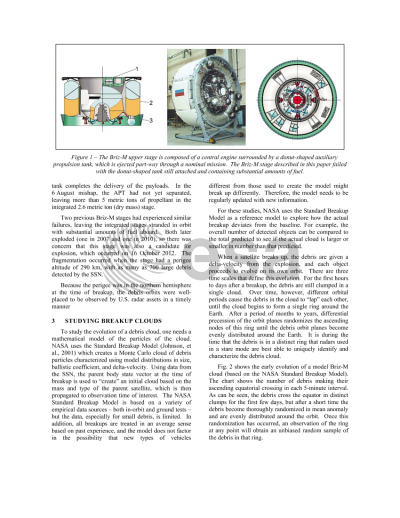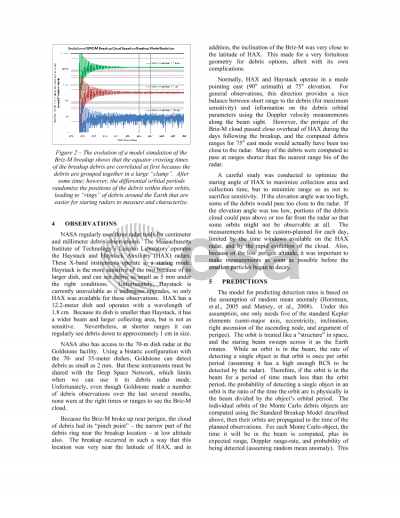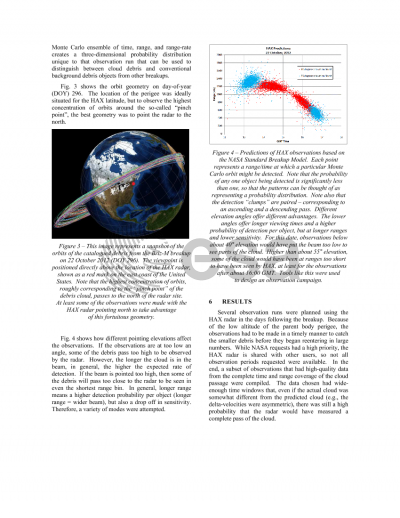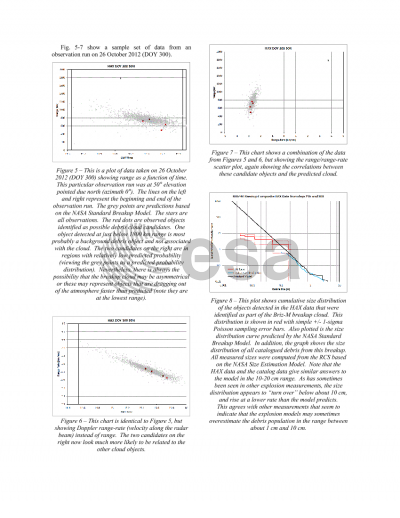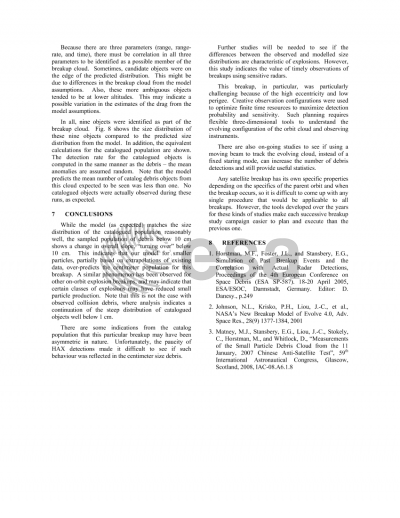Document details

Abstract
On 6 August 2012, Russia launched two commercial satellites aboard a Proton rocket, and attempted to place them in geosynchronous orbit using a Briz-M upper stage (2012-044C, SSN 38746). Unfortunately, the upper stage failed early in its burn and was left stranded in an elliptical orbit with a perigee in low Earth orbit (LEO). Because the stage failed with much of its fuel on board, it was deemed a significant breakup risk. These fears were confirmed when it broke up 16 October, creating a large cloud of debris with perigees below that of the International Space Station. The debris cloud was tracked by the U.S. Space Surveillance Network (SSN), which can reliably detect and track objects down to about 10 cm in size. Because of the unusual geometry of the breakup, there was an opportunity for the NASA Orbital Debris Program Office to use specialized radar assets to characterize the extent of the debris cloud in sizes smaller than the standard debris tracked by the SSN. This paper describes the observation campaign to measure the small particle distributions of this cloud and presents the results of the data analysis. We shall compare the data to the modelled size distribution, number, and shape of the cloud, and what implications this may have for future breakup debris models. We shall conclude the paper with a discussion about how this measurement process can be improved for future breakups.
Preview

